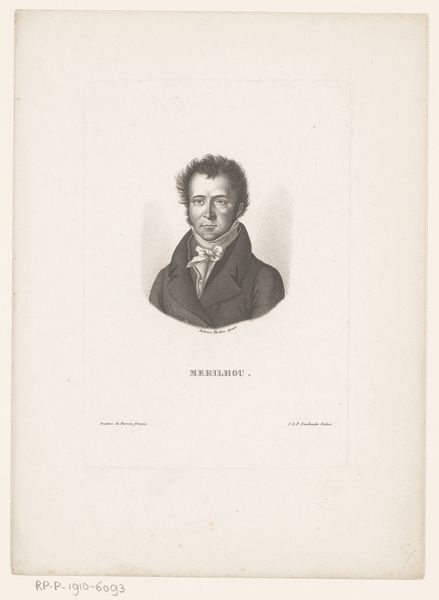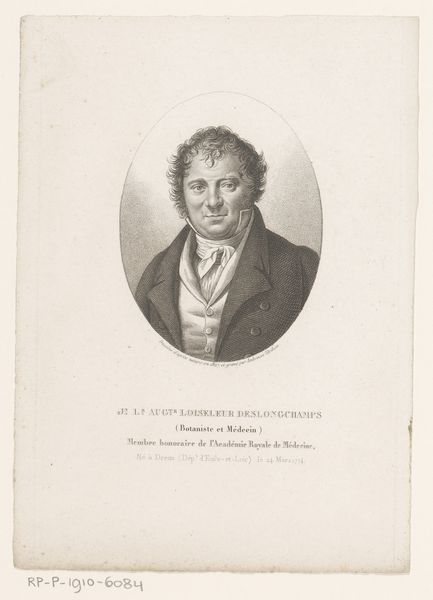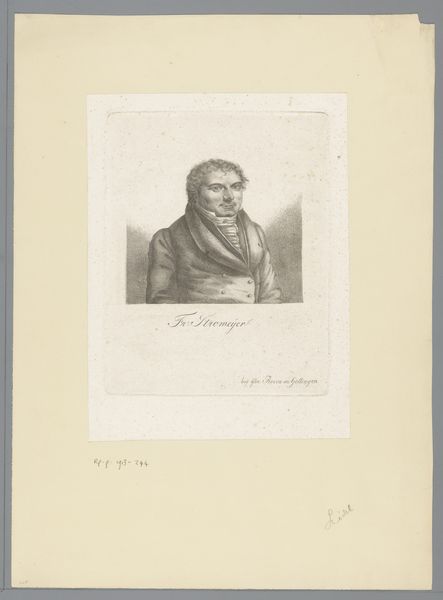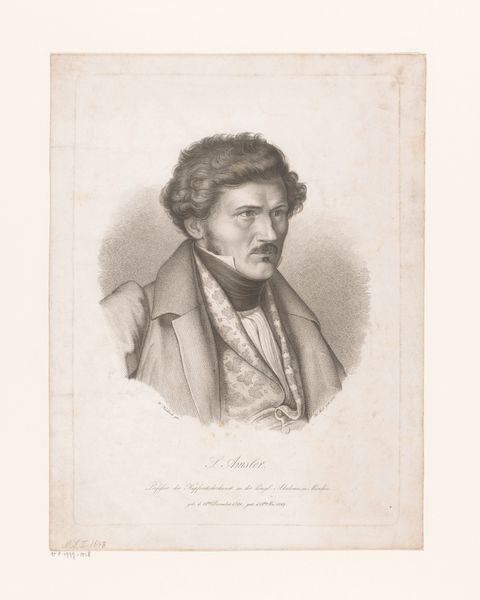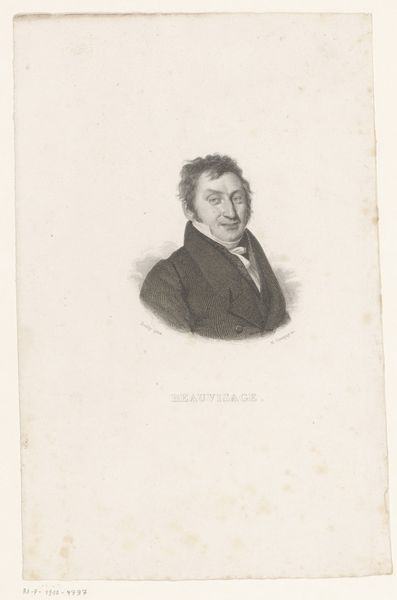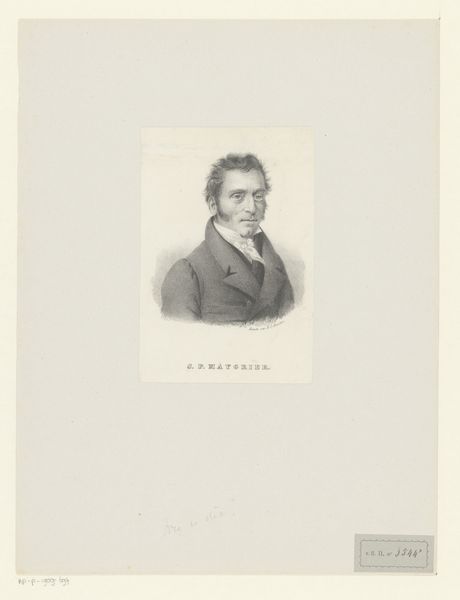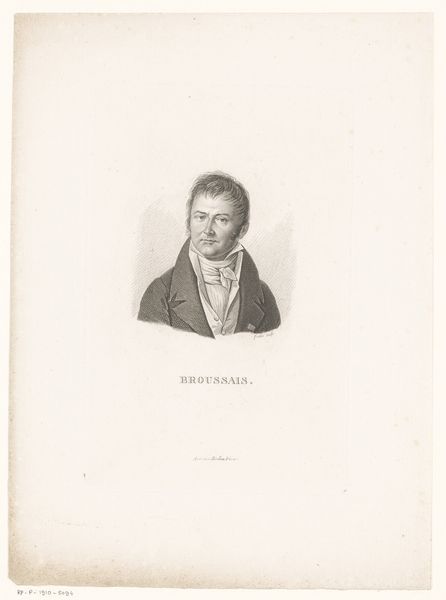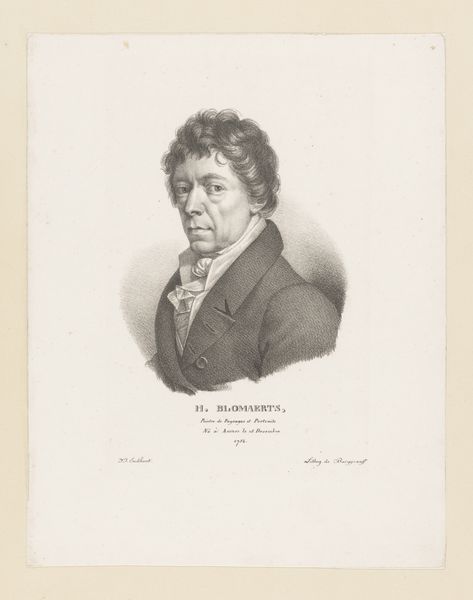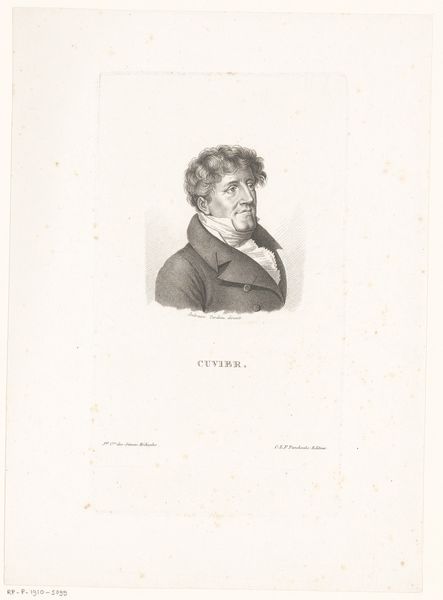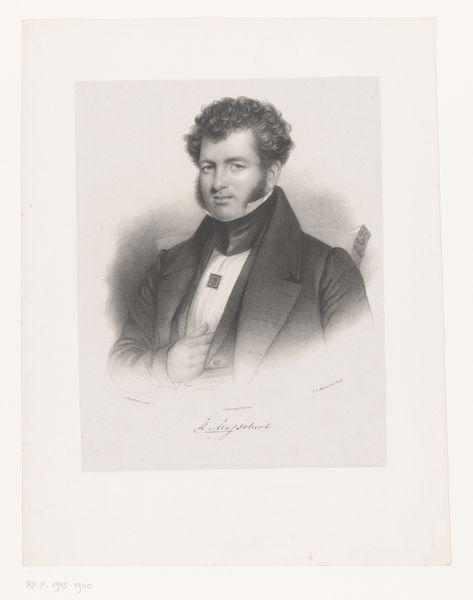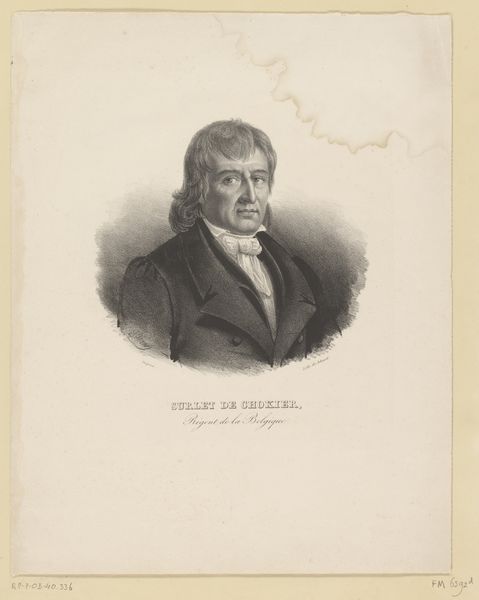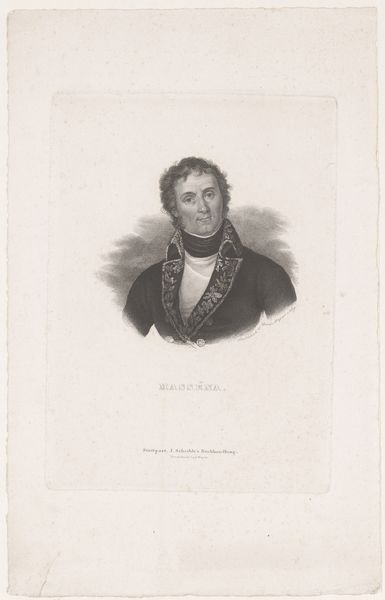
drawing, pencil
#
portrait
#
drawing
#
pencil drawing
#
romanticism
#
pencil
#
realism
Dimensions: height 490 mm, width 320 mm
Copyright: Rijks Museum: Open Domain
Pierre Roch Vigneron created this portrait of François Chaussier using lithography, a printmaking technique that relies on the chemical repulsion of oil and water. A design is drawn with a greasy crayon onto a smooth stone or metal plate, which is then treated to accept ink only in the drawn areas. The lithographic process allowed for relatively quick and inexpensive reproduction, making images like this accessible to a wider audience. Consider the implications of this shift: portraiture, once reserved for the elite, became a tool for disseminating likenesses of public figures like Chaussier. Notice the level of detail Vigneron achieved, from the texture of Chaussier’s coat to the delicate rendering of his hair. This speaks to the skill involved in manipulating the lithographic materials. The rise of printmaking also transformed artistic labor, moving away from unique handmade works toward mass-produced images circulated within a growing consumer culture. Understanding the materials and processes used to create this image opens a window into the changing social and economic landscape of the time.
Comments
No comments
Be the first to comment and join the conversation on the ultimate creative platform.
